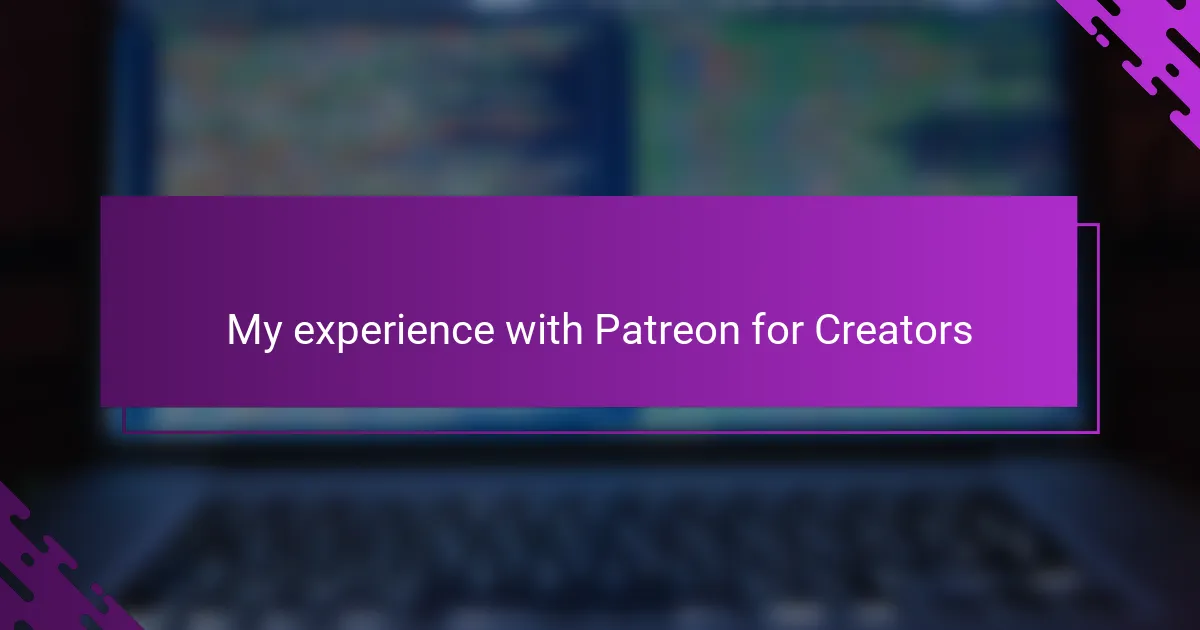Key takeaways
- Patreon allows creators to build a community while monetizing their work through tiered memberships, fostering personal connections with supporters.
- Engaging content should feel special and exclusive, encouraging collaboration and feedback from patrons to enhance creativity.
- Transparency and open communication with patrons are crucial for building lasting relationships and trust.
- Managing time and expectations is important, as consistency in posting and ongoing promotion can balance the creative process with the demands of running a Patreon.
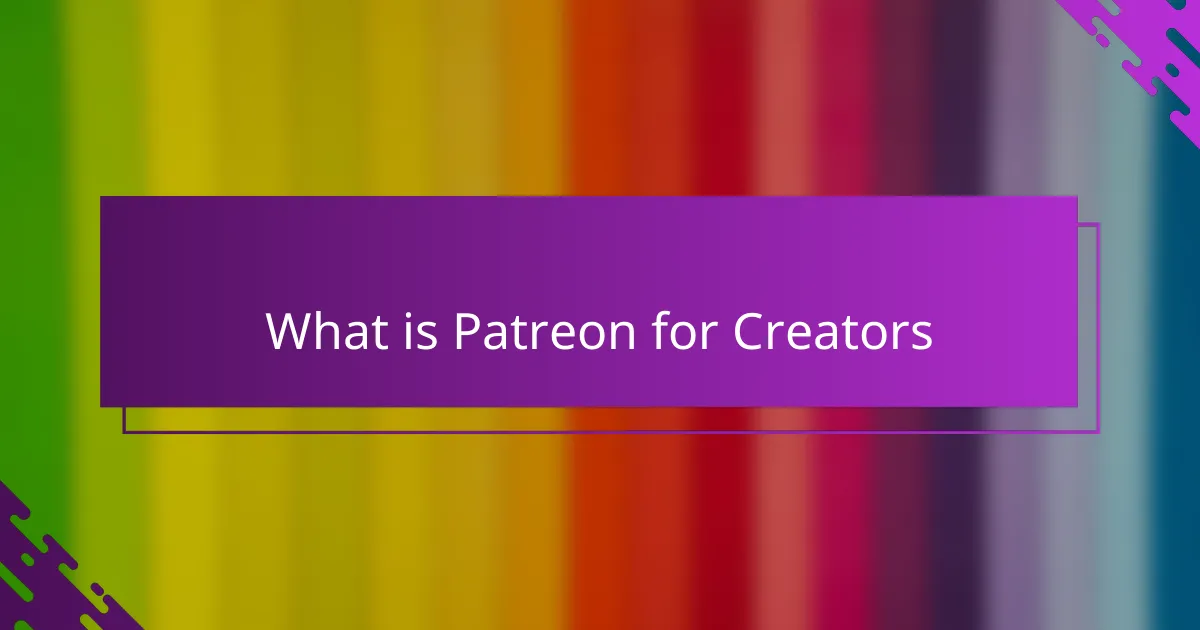
What is Patreon for Creators
Patreon for Creators is a membership platform that allows artists, writers, and other creators to earn a steady income by offering exclusive content directly to their supporters. When I first discovered Patreon, it felt like a bridge connecting my passion with the people who truly valued my work. Have you ever wished for a way to monetize your creativity without relying on ads or one-time sales?
What makes Patreon special is its focus on building a community, not just a marketplace. From my experience, it’s more than just transactions—it’s about creating a space where fans can engage deeply and feel like collaborators in the creative journey. This personal connection has been incredibly rewarding and motivating for me.
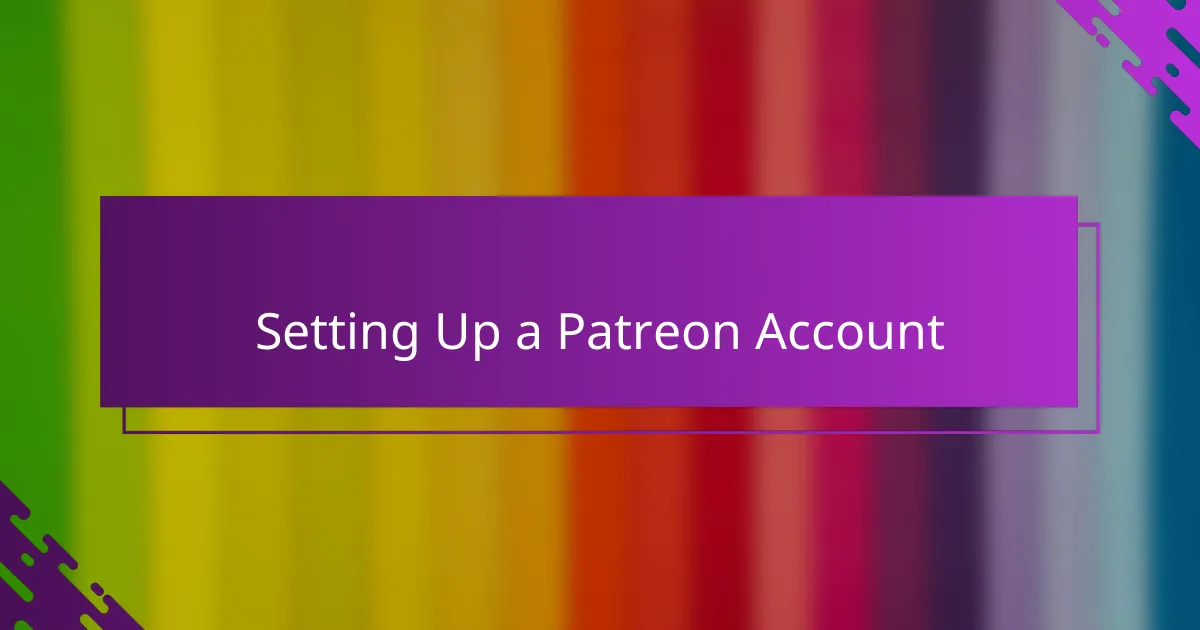
Setting Up a Patreon Account
Setting up my Patreon account was surprisingly straightforward, but I won’t lie—it took me a bit to find the right balance between being clear and inviting. Have you ever stared at a signup form wondering how to introduce yourself in just a few words? I found that sharing a genuine glimpse of my creative process in the bio helped me connect with potential patrons right away.
One thing I learned early on is that choosing the right membership tiers is crucial. I played around with different reward levels before settling on a structure that felt fair and exciting both for me and my supporters. Each tier became a chance to offer something meaningful, whether it was behind-the-scenes updates or early access to new pieces.
Connecting my bank account and setting up payout details felt like a big step—it made everything feel official and real. I remember that moment gave me a mix of excitement and nervousness because it meant I was committing to a new chapter as a creator. Have you ever had that feeling when something small suddenly feels like a huge milestone? Patreon gave me that, and it was worth every bit of the setup effort.
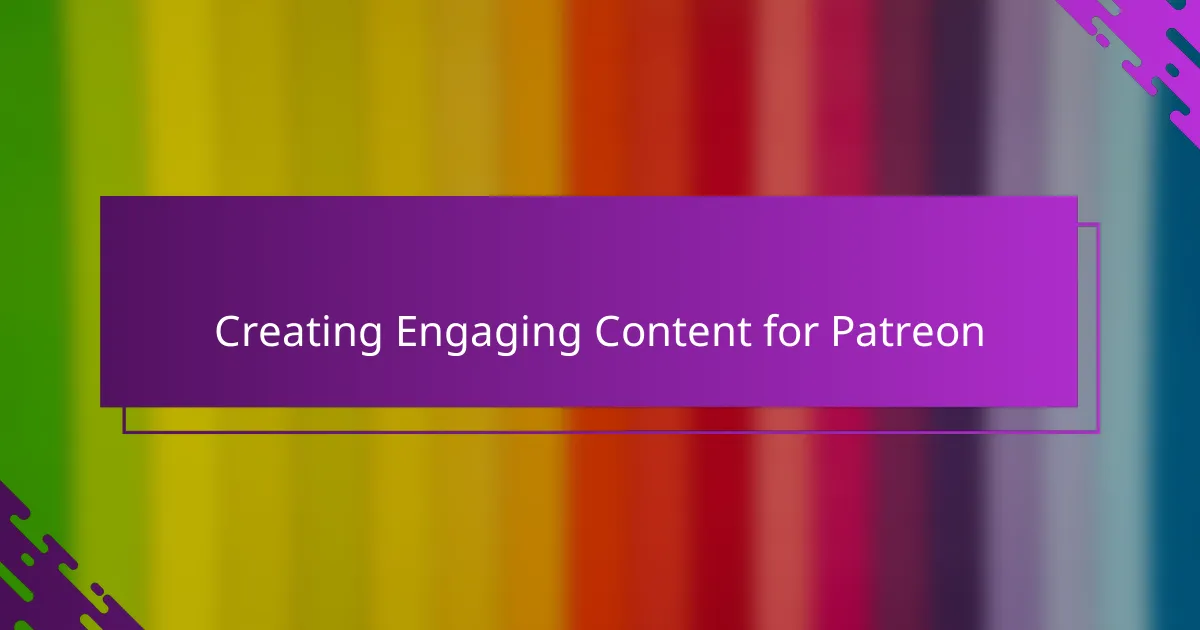
Creating Engaging Content for Patreon
Creating engaging content on Patreon has been both a fun challenge and a rewarding experience for me. I quickly realized that it’s not just about posting anything but offering something that feels special and exclusive to my patrons. Have you ever thought about what makes a moment or a piece of content truly memorable? For me, it’s those little behind-the-scenes glimpses and personal stories that invite patrons to feel like they’re part of the creative process.
One thing I experimented with was sharing work-in-progress updates and asking for feedback. That simple act turned my patrons into collaborators, and their enthusiasm energized my creativity. It made me see content creation as a two-way conversation rather than a one-sided broadcast, which changed everything about how I approached each post.
Sometimes I wonder, how much is too much content, and how little is too little? Finding that sweet spot took time and honest conversations with my supporters. What I learned is that consistency and authenticity trump volume—patrons appreciate knowing what to expect and feeling like they’re getting a genuine glimpse into both my art and my life. That’s what keeps them coming back, and that’s what kept me motivated to keep creating.
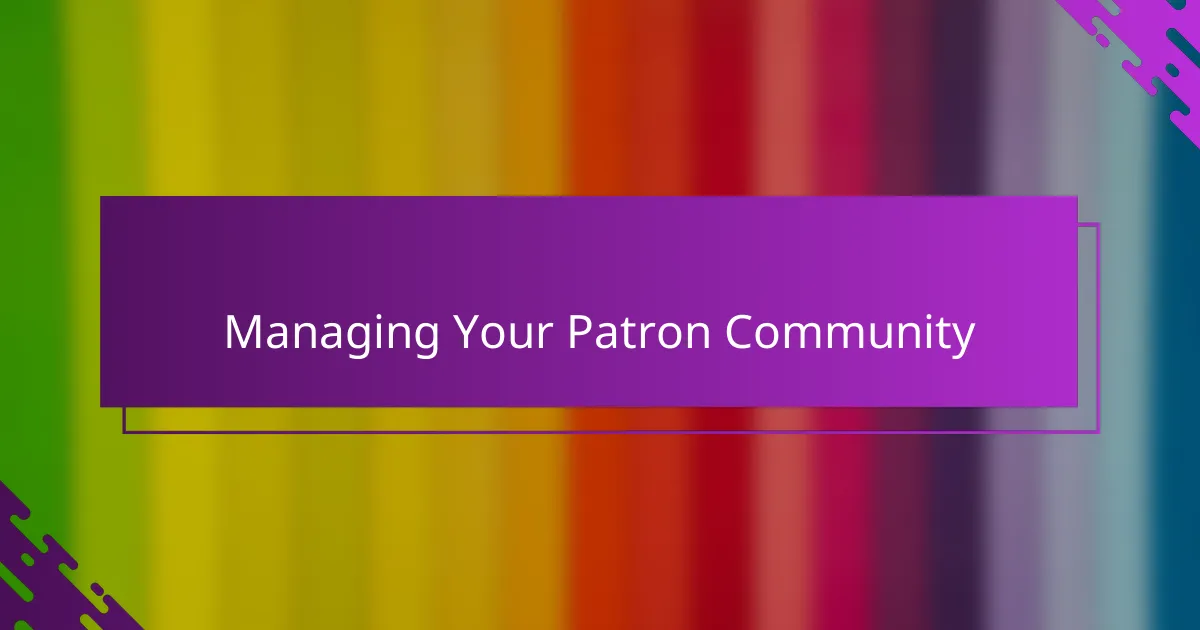
Managing Your Patron Community
Building and managing my patron community has been one of the most personal parts of using Patreon. I quickly learned that engaging with patrons isn’t just about thanking them once—it’s about nurturing ongoing relationships. Have you ever noticed how a simple reply or shoutout can transform a casual follower into a loyal supporter? That connection means everything.
Keeping communication open and honest became my go-to approach. I found that sharing both successes and struggles made my patrons feel like true partners in the journey. When I was transparent about the creative hurdles I faced, their encouragement didn’t just boost my morale—it fueled my motivation to push through.
Another insight I gained is setting clear expectations about patron interaction. At first, I tried to respond to every message immediately, but I quickly realized I needed boundaries to avoid burnout. Finding that balance was tough, but communicating it honestly helped maintain trust and respect within the community. Have you ever had to set limits with people who mean a lot to you? It’s challenging, but crucial for long-term connection.
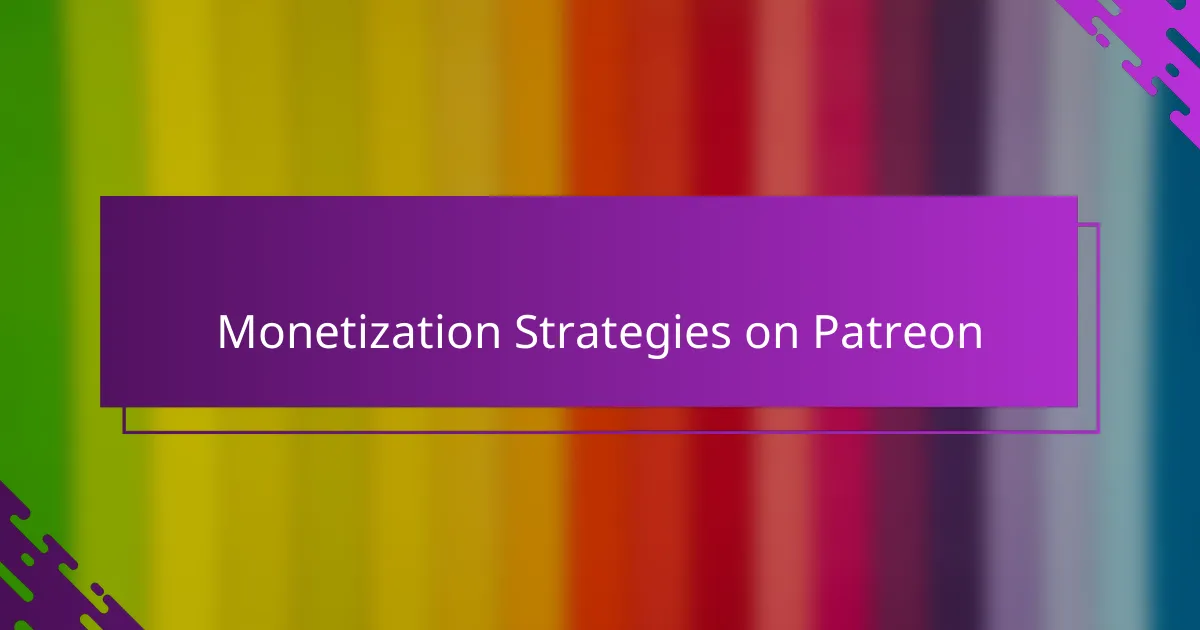
Monetization Strategies on Patreon
One of the monetization strategies I found effective on Patreon was offering tiered memberships that felt genuinely rewarding. Instead of just slapping on arbitrary perks, I asked myself, “What would make me excited to support someone?” That mindset helped me create levels where each step offered something valuable—like exclusive tutorials, early access, or personalized shoutouts—which made patrons feel appreciated and eager to contribute more.
I also experimented with limited-time offers and special campaign goals to spark urgency and collective enthusiasm. For example, when I set a target for a new project, patrons rallied around it, knowing their support had a real impact. Have you noticed how creating a shared mission can turn passive followers into active backers? From my experience, tying rewards to specific creative milestones keeps motivation high—for both me and my community.
Another approach I can’t recommend enough is blending non-monetary engagement with tangible benefits. Sometimes, simply involving patrons in decision-making or giving them behind-the-scenes access strengthens loyalty just as much as physical rewards. When I invited patrons to vote on which projects to focus on, it made the experience feel collaborative, turning support into a meaningful partnership rather than a transaction. Have you thought about how that kind of connection could change your own creative journey?
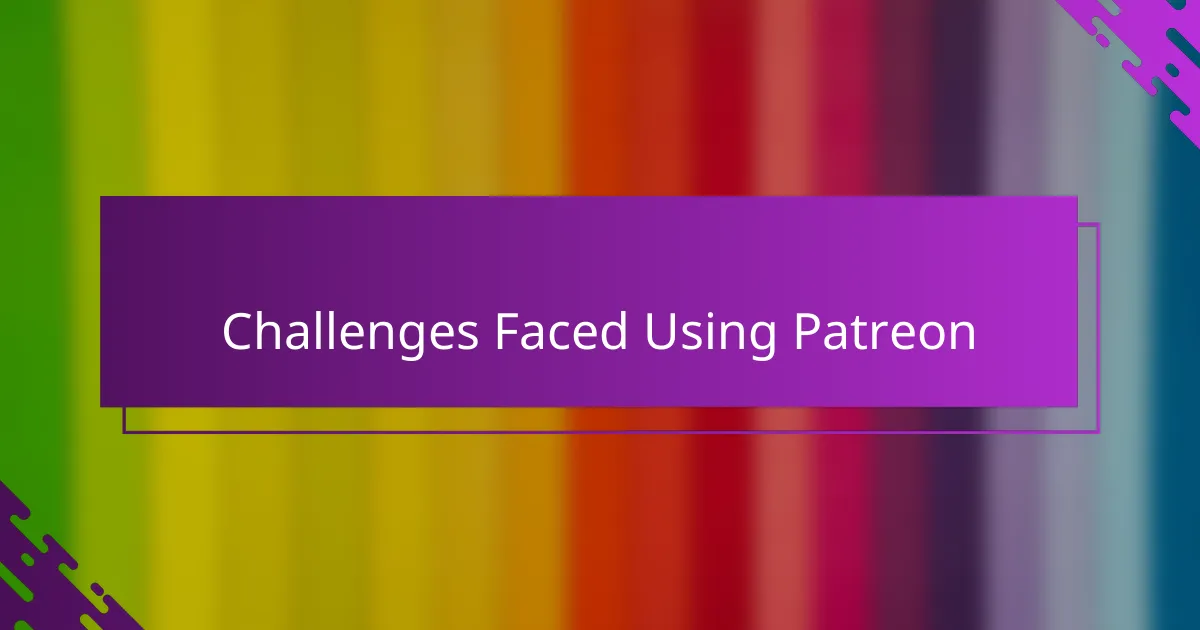
Challenges Faced Using Patreon
One challenge I encountered with Patreon was managing the fees and how they slowly add up. It made me question whether my earnings truly reflected the effort I put in, especially when some patrons chose lower tiers. Have you ever felt that the platform’s cuts take a bigger bite than you expected? Balancing fair pricing while covering these fees became a tricky puzzle.
Another hurdle was the pressure to maintain a consistent posting schedule. Patreon’s community expects regular updates, which pushed me to create even when inspiration felt scarce. I wondered, how do creators stay authentic without burning out? It took me a while to find a sustainable rhythm that kept both me and my patrons happy.
Lastly, I’ve noticed that attracting patrons requires more than just great content—it demands ongoing promotion and engagement outside Patreon itself. Sometimes, it felt overwhelming to juggle social media, email newsletters, and Patreon interactions all at once. Have you tried keeping up with all those channels while also focusing on your craft? It’s a balancing act that takes patience and perseverance.
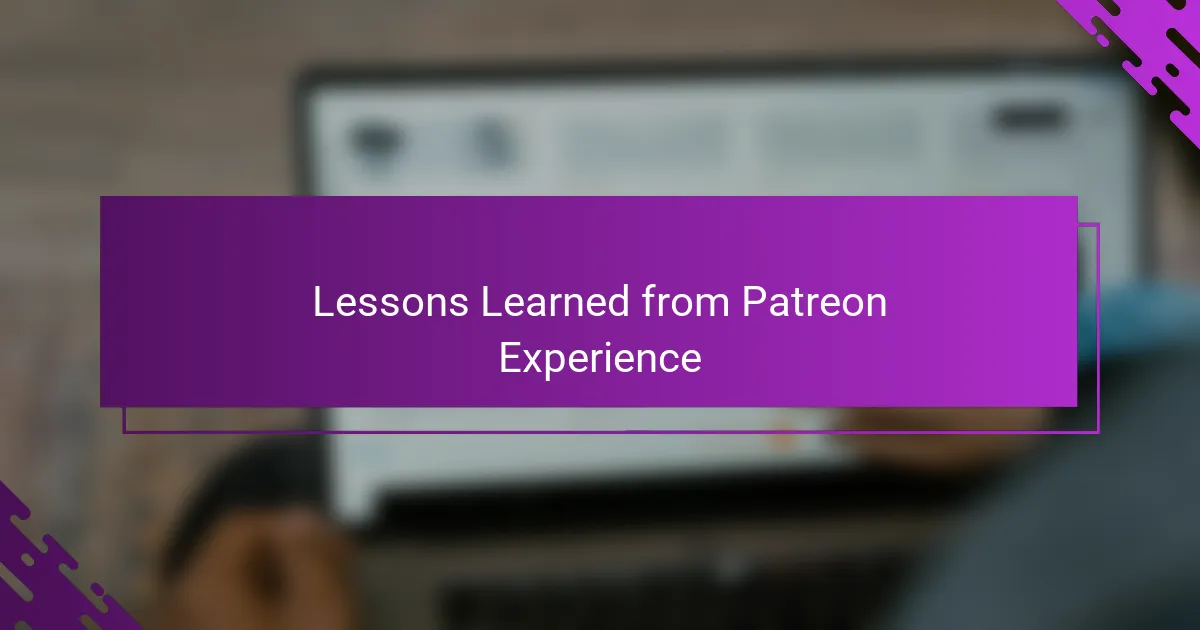
Lessons Learned from Patreon Experience
What really struck me about my Patreon journey was how much patience it demanded. I used to expect quick results, but it became clear that building a loyal community takes time and consistent effort. Have you ever felt caught between wanting instant success and knowing deep down that real growth is a slow process? That tension taught me to appreciate each small milestone rather than just chasing big numbers.
I also learned that transparency is a superpower in this space. Early on, I hesitated to share creative struggles, worrying it might seem unprofessional. But opening up created a deeper bond with my patrons—they didn’t just see the polished final product, they witnessed the human behind it. That vulnerability fueled a connection that mere exclusive content alone couldn’t achieve. Could it be that showing imperfections actually invites support more than hiding them?
Finally, I realized that balancing creative passion with practical business sense is essential. Creating for Patreon isn’t just about art; it’s also about managing expectations, scheduling content, and handling finances. At first, juggling these felt overwhelming, and I wondered if creativity would get lost in the shuffle. Over time, I found that setting clear boundaries and goals helped me keep my enthusiasm alive without burning out—a lesson I think every creator on Patreon eventually has to face.
